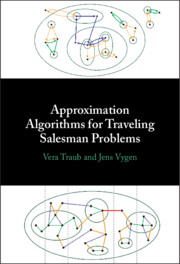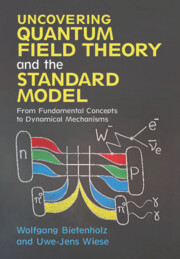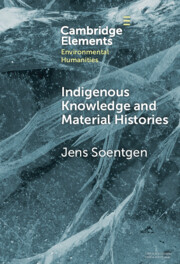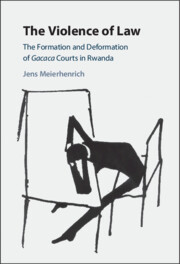3764 results

Approximation Algorithms for Traveling Salesman Problems
- Coming soon
-
- Expected online publication date:
- October 2024
- Print publication:
- 31 October 2024
-
- Book
- Export citation
The Politics and Governance of Decarbonization
- The Interplay between State and Non-State Actors in Sweden
- Coming soon
-
- Expected online publication date:
- September 2024
- Print publication:
- 30 September 2024
-
- Book
- Export citation

Kant and the Supposed Right to Lie
- Coming soon
-
- Expected online publication date:
- June 2024
- Print publication:
- 30 June 2024
-
- Book
- Export citation

Uncovering Quantum Field Theory and the Standard Model
- From Fundamental Concepts to Dynamical Mechanisms
- Coming soon
-
- Expected online publication date:
- June 2024
- Print publication:
- 30 June 2024
-
- Textbook
- Export citation

Indigenous Knowledge and Material Histories
- The Example of Rubber
- Coming soon
-
- Expected online publication date:
- June 2024
- Print publication:
- 30 June 2024
-
- Element
- Export citation

Charting America's Cold War Waters in East Asia
- Sovereignty, Local Interests, and International Security
- Coming soon
-
- Expected online publication date:
- May 2024
- Print publication:
- 31 May 2024
-
- Book
- Export citation

The Violence of Law
- The Formation and Deformation of Gacaca Courts in Rwanda
- Coming soon
-
- Expected online publication date:
- April 2024
- Print publication:
- 02 May 2024
-
- Book
- Export citation
Inclusive meritocracy: ability and descriptive representation among Danish politicians
-
- Journal:
- Political Science Research and Methods , First View
- Published online by Cambridge University Press:
- 19 April 2024, pp. 1-24
-
- Article
-
- You have access
- Open access
- HTML
- Export citation
Simulations of radiatively cooled magnetic reconnection driven by pulsed power
-
- Journal:
- Journal of Plasma Physics / Volume 90 / Issue 2 / April 2024
- Published online by Cambridge University Press:
- 19 April 2024, 905900215
-
- Article
- Export citation
Viscoelastic wetting: Cox–Voinov theory with normal stress effects
-
- Journal:
- Journal of Fluid Mechanics / Volume 985 / 25 April 2024
- Published online by Cambridge University Press:
- 18 April 2024, A17
-
- Article
-
- You have access
- Open access
- HTML
- Export citation
Gymnocranius indicus, a new large-eye seabream from the Indian Ocean
-
- Journal:
- Journal of the Marine Biological Association of the United Kingdom / Volume 104 / 2024
- Published online by Cambridge University Press:
- 04 April 2024, e38
-
- Article
-
- You have access
- HTML
- Export citation
296 Investing in Community-Led Research Capacity Building: New Seed Grant Type
- Part of
-
- Journal:
- Journal of Clinical and Translational Science / Volume 8 / Issue s1 / April 2024
- Published online by Cambridge University Press:
- 03 April 2024, p. 91
-
- Article
-
- You have access
- Open access
- Export citation
343 Development of osteoclast derived exosomes for vascular calcification therapy
- Part of
-
- Journal:
- Journal of Clinical and Translational Science / Volume 8 / Issue s1 / April 2024
- Published online by Cambridge University Press:
- 03 April 2024, p. 104
-
- Article
-
- You have access
- Open access
- Export citation
Whittaker categories of quasi-reductive lie superalgebras and quantum symmetric pairs
- Part of
-
- Journal:
- Forum of Mathematics, Sigma / Volume 12 / 2024
- Published online by Cambridge University Press:
- 02 April 2024, e37
-
- Article
-
- You have access
- Open access
- HTML
- Export citation
Team Science Competencies for Clinical Research Professionals: A Multi-Leveled Delphi Approach
-
- Journal:
- Journal of Clinical and Translational Science / Accepted manuscript
- Published online by Cambridge University Press:
- 01 April 2024, pp. 1-25
-
- Article
-
- You have access
- Open access
- Export citation
The late-Quaternary megafauna extinctions: patterns, causes, ecological consequences, and implications for ecosystem management in the Anthropocene
-
- Journal:
- Cambridge Prisms: Extinction / Accepted manuscript
- Published online by Cambridge University Press:
- 22 March 2024, pp. 1-68
-
- Article
-
- You have access
- Open access
- Export citation
Copyright page
-
- Book:
- The Cambridge Companion to British Theatre since 1945
- Published online:
- 14 March 2024
- Print publication:
- 21 March 2024, pp iv-iv
-
- Chapter
- Export citation
Chronology of British Theatre since 1945
-
-
- Book:
- The Cambridge Companion to British Theatre since 1945
- Published online:
- 14 March 2024
- Print publication:
- 21 March 2024, pp xiii-xl
-
- Chapter
- Export citation
Part IV - Theatre and State
-
- Book:
- The Cambridge Companion to British Theatre since 1945
- Published online:
- 14 March 2024
- Print publication:
- 21 March 2024, pp 207-263
-
- Chapter
- Export citation
Index
-
- Book:
- The Cambridge Companion to British Theatre since 1945
- Published online:
- 14 March 2024
- Print publication:
- 21 March 2024, pp 274-283
-
- Chapter
- Export citation















